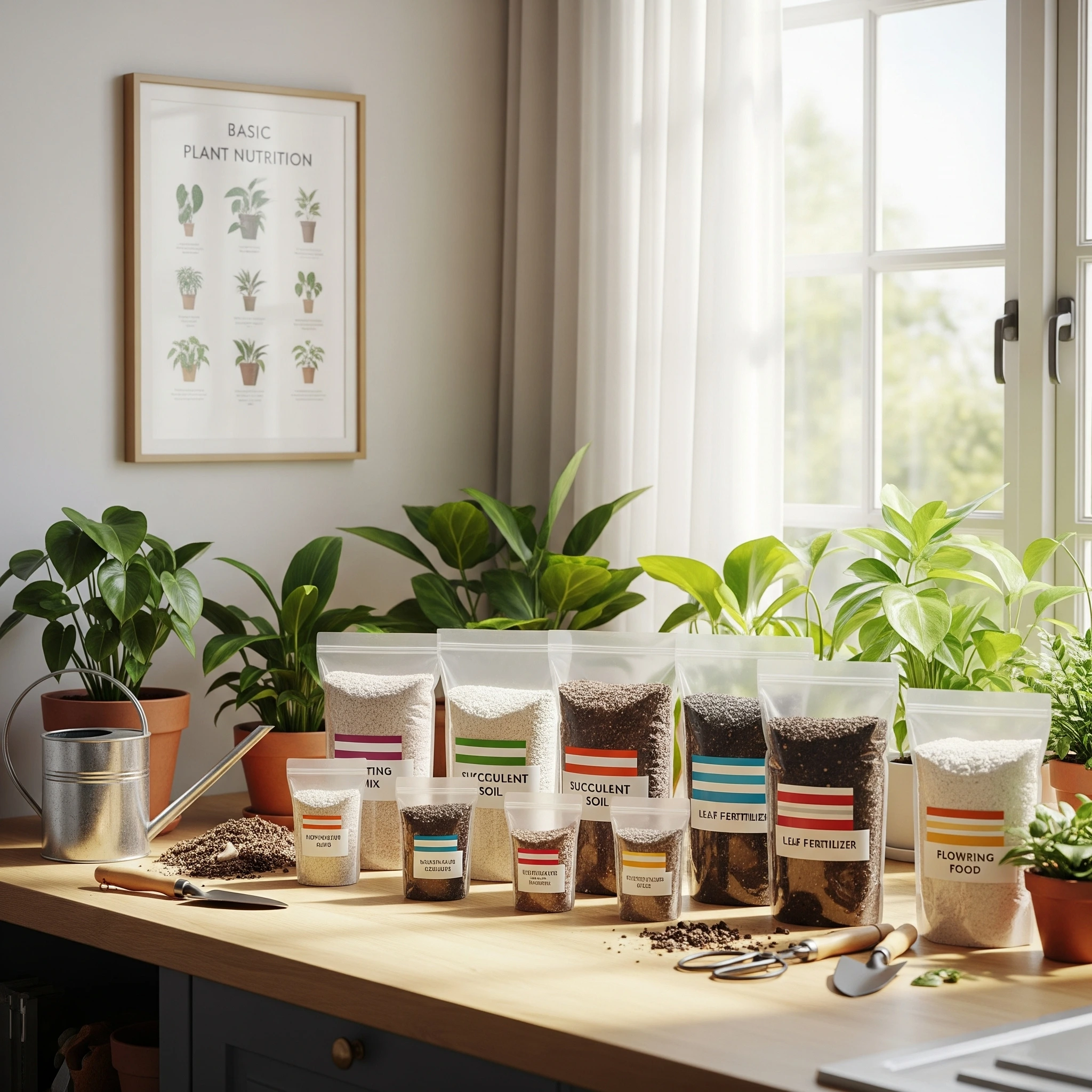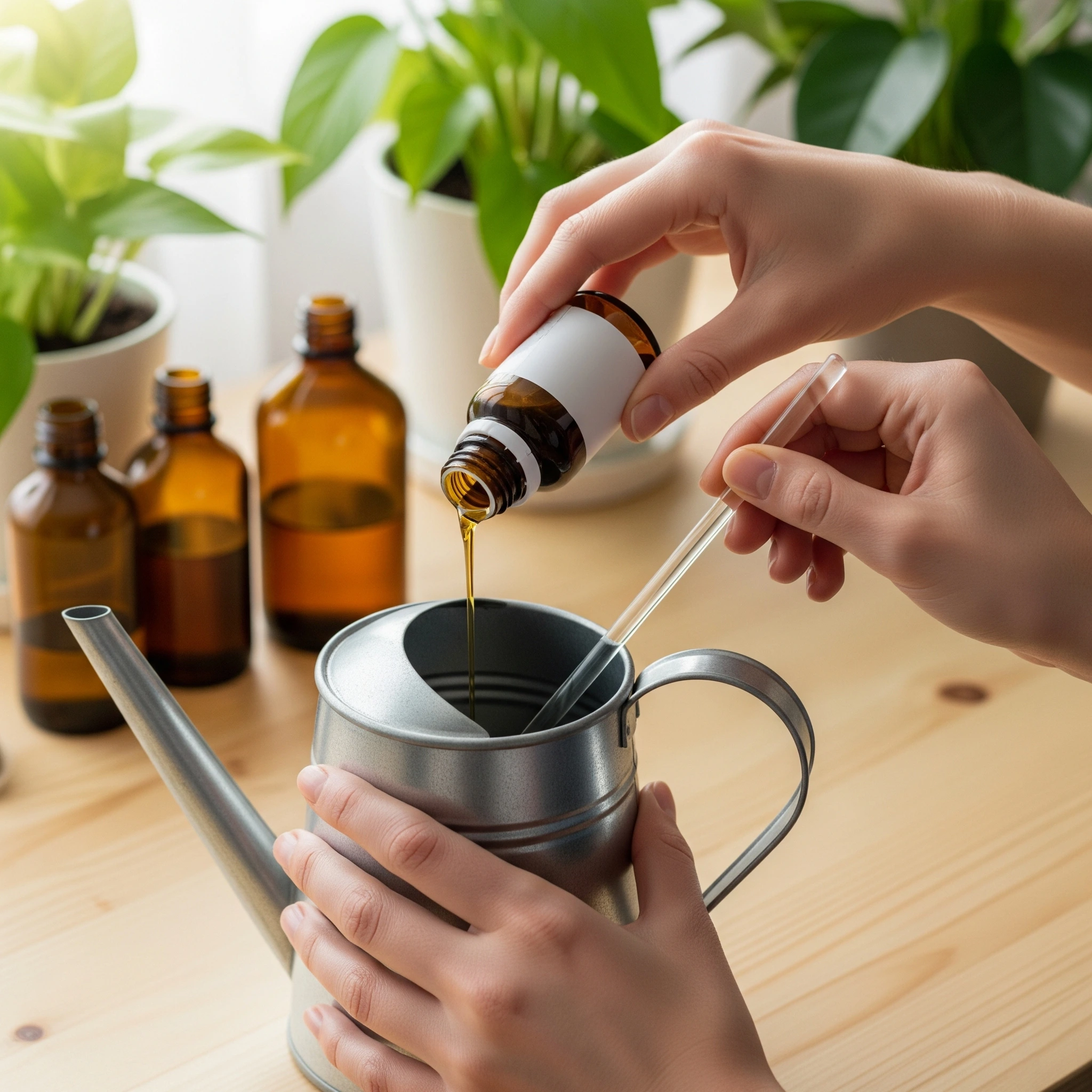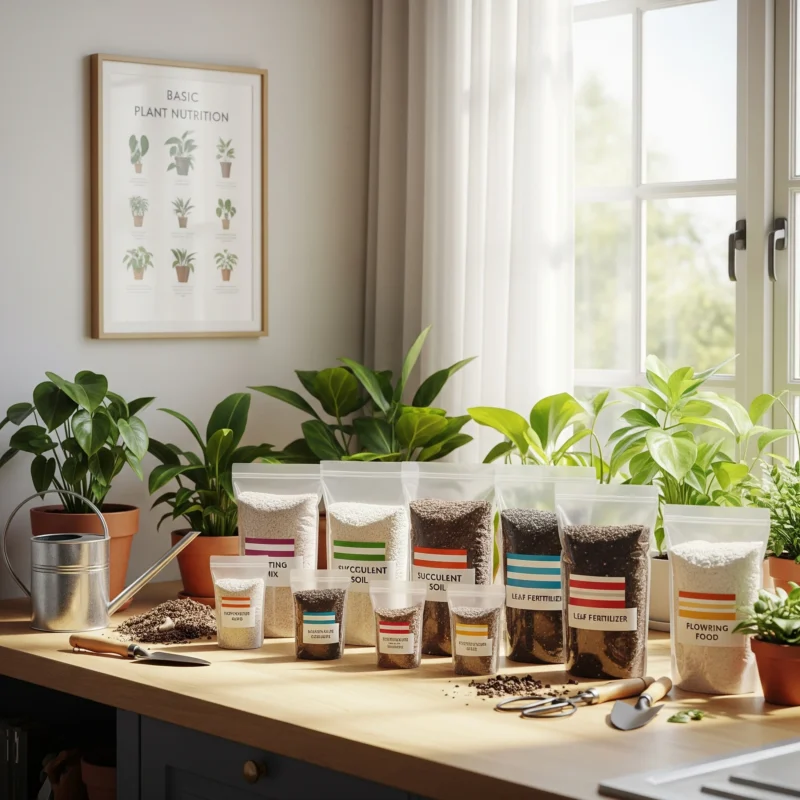The Ultimate Guide to Indoor Plant Soil & Fertilizers: Fueling Your Green Oasis (Australia & Canada)
Hello, passionate plant parents in Australia and Canada! You’ve mastered watering, found the perfect spot for light, but have you ever thought about what’s happening beneath the surface? The foundation of your plant’s life-its soil and the nutrients within it-is often the most overlooked aspect of plant care.
Welcome to the ultimate guide to indoor plant soil & fertilizers! This comprehensive resource will demystify the complex world of potting mixes and plant food, empowering you with the knowledge to give your green companions the perfect foundation for a thriving life. Let’s dig in and learn how to fuel your green oasis!
Think of the soil as your plant’s entire world. A healthy indoor plant soil is not just dirt; it’s a carefully balanced ecosystem that provides:
- Anchorage: A stable home for roots.
- Airflow: Crucial for roots to “breathe.”
- Water Retention & Drainage: The perfect balance of holding enough water without becoming waterlogged.
- Nutrients: The food your plant needs to grow, which it gets from the soil and from fertilizer.
Personal Note: As a beginner, I thought all dirt was the same! I learned the hard way that using garden soil for my indoor plants caused root rot. Switching to a proper indoor plant soil mix completely changed my success rate, showing me that the foundation truly matters.
Mastering the Mix: Your Guide to Indoor Plant Soil
Choosing the best soil for indoor plants is a game-changer. It prevents countless problems and sets your plant up for long-term success.
1. The Key Roles of Soil: Anchorage, Air & Water
- Anchorage: Provides stability for the plant, allowing its roots to hold it upright.
- Air: Roots need oxygen to function. A chunky, well-aerated soil mix prevents compaction, which suffocates roots.
- Water: Soil holds water for the roots but must drain excess to prevent root rot. This balance is key to finding the best soil for indoor plants. (Source: Gardening Australia – Potting Mixes)
2. What is the Best Soil for Indoor Plants? (DIY vs. Store-Bought)
- Store-Bought: For beginners, a high-quality “all-purpose indoor potting mix” from a reputable brand in Australia or Canada is a great choice. They are pre-mixed to provide the right balance.
- DIY: For a more customized approach, you can mix your own. This is especially useful for specific plant types, such as succulents or aroids like Monstera, which need a grittier, faster-draining mix. We’ll show you how below!
Pro Tip: I often mix my own custom blends for my tropical plants. A great general-purpose mix for most houseplants is 1 part potting mix, 1 part perlite, and 1 part coco coir or orchid bark. This provides excellent drainage and aeration.
3. How to Make Soil for Indoor Plants (The Ultimate DIY Recipe)
- Why DIY? Making your own mix gives you complete control over the ingredients, ensuring your indoor plant soil is perfectly tailored to your plant’s needs.
- The Recipe:
- Base: 1 part high-quality indoor potting mix.
- Aeration: 1 part perlite or pumice.
- Drainage/Structure: 1 part orchid bark or coco coir chunks.
- Instructions: Simply mix these ingredients thoroughly in a large bucket. This “airy” recipe is a great starting point for many tropical and aroid plants.
4. Can I Use Garden Soil for Indoor Plants? (The Big Mistake)
- The “Why not?”: This is a common and often fatal mistake for indoor plants. Garden soil is too dense, can compact easily, and doesn’t provide the necessary aeration and drainage that houseplants need. It also often contains pests, weed seeds, and pathogens that can harm your indoor plants.
- The “What to do?”: Always, always use a dedicated potting mix!

Demystifying Fertilizers: Your Houseplant Fertilizer Guide
Plants get their energy from light, but they get their food from nutrients in the soil. Fertilizing is essential, but it’s easy to get wrong! Here’s your simple houseplant fertilizer guide.
1. The “What”: Understanding N-P-K & Micronutrients
- Fertilizers are labeled with three numbers (e.g., 10-10-10), representing a ratio of N-P-K:
- N (Nitrogen): For lush, green leaf growth.
- P (Phosphorus): For strong roots and blooms.
- K (Potassium): For overall plant health and resilience.
- Most houseplant fertilizer guide will recommend a balanced ratio like 20-20-20 or 10-10-10.
2. The “When”: Fertilizing with the Seasons
- Plants have a “growing season” (spring and summer) and a “dormant season” (fall and winter). Only fertilize during the growing season when your plant is actively producing new leaves.
- What to Avoid: Do not fertilize in fall or winter. This can harm the plant. (Source: Royal Horticultural Society – Houseplant Fertilizing)
3. The “How”: Choosing the Right Type of Fertilizer
- Liquid Fertilizer: The most common and easiest to use. You simply dilute it with water and apply it during your regular watering routine.
- Slow-Release Granules: Small pellets you mix into the soil that release nutrients over several months.
- Fertilizer Spikes: Spikes you push into the soil that dissolve over time.
Pro Tip: For beginners, a diluted liquid fertilizer is the safest and most effective way to go, as it gives you more control over the amount of nutrients your plant receives. Always dilute to half-strength to prevent fertilizer burn.
4. Common Mistakes to Avoid When Fertilizing
- Over-fertilizing: This is the most common mistake and can burn your plant’s roots. Always dilute!
- Fertilizing a dry plant: Always water your plant first before fertilizing.
- Fertilizing a sick plant: Do not fertilize a plant that is already stressed or sick. This will not help it and may make it worse.

Troubleshooting: Signs of Poor Soil or Nutrient Deficiency
Your plants are a great way to decode the health of their soil and nutrient levels.
- Yellowing Lower Leaves: Can be a sign of nutrient deficiency (especially Nitrogen), or sometimes overwatering.
- Stunted Growth: Lack of nutrients or compacted indoor plant soil can cause slow growth.
- Brown or Crispy Tips: A classic sign of over-fertilizing (fertilizer burn).
- Mushy Roots: A clear sign of compacted, waterlogged soil and root rot.
Indoor Plant Soil & Fertilizer Q&A: Your Top Questions Answered
Do I need to buy special potting mix for my plants?
Yes, it is highly recommended to buy a potting mix specifically for indoor plants. Garden soil is too dense and can compact, leading to poor drainage and suffocating the roots. A good indoor plant soil mix will be light, airy, and well-draining.
How can I tell if my plant needs to be fertilized?
Signs that your plant might need fertilizer include slow or stunted growth, pale or yellowing leaves (especially the lower leaves), and a lack of new foliage. A good houseplant fertilizer guide suggests a consistent feeding schedule during the growing season.
Is it okay to use coffee grounds or eggshells as fertilizer?
While coffee grounds and eggshells can add nutrients to the soil, they can also alter the soil’s pH and may not provide a balanced range of nutrients. For a consistent and safe approach, it’s better to stick with a formulated liquid houseplant fertilizer diluted to half-strength.
Where can I buy good quality soil and fertilizer in Australia and Canada?
You can find a wide range of quality indoor plant soil and fertilizers at local garden centers, nurseries, and large hardware stores like Bunnings Warehouse in Australia or Home Depot in Canada. Many specialized online plant shops also offer excellent, pre-mixed options.

Conclusion: Ready to Fuel Your Plant’s Success?
Mastering indoor plant soil and fertilizer is a key step in becoming a confident and successful plant parent. By providing your plants with the right foundation and a consistent feeding schedule, you’re not just ensuring their survival—you’re fueling their growth and setting them up to become the lush, vibrant companions you’ve always dreamed of.
So, take a look at your plant’s foundation. It might be the secret to unlocking its full potential.
What’s one indoor plant soil or fertilizer tip you found most helpful? Share your thoughts and questions below!


